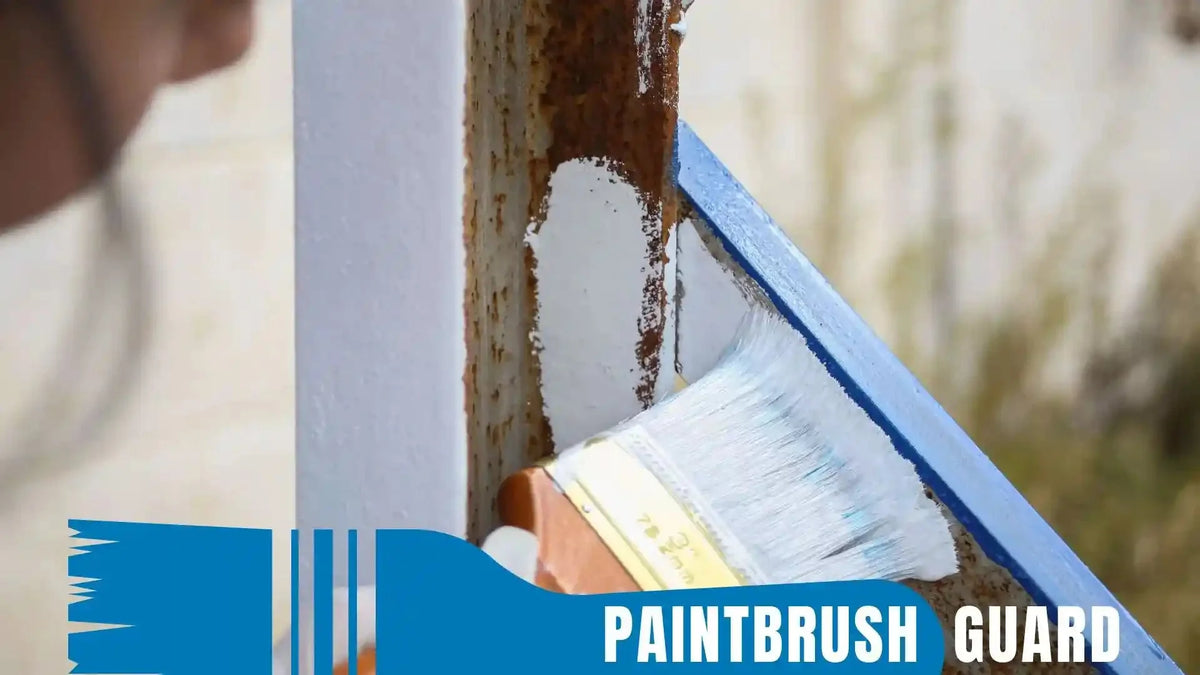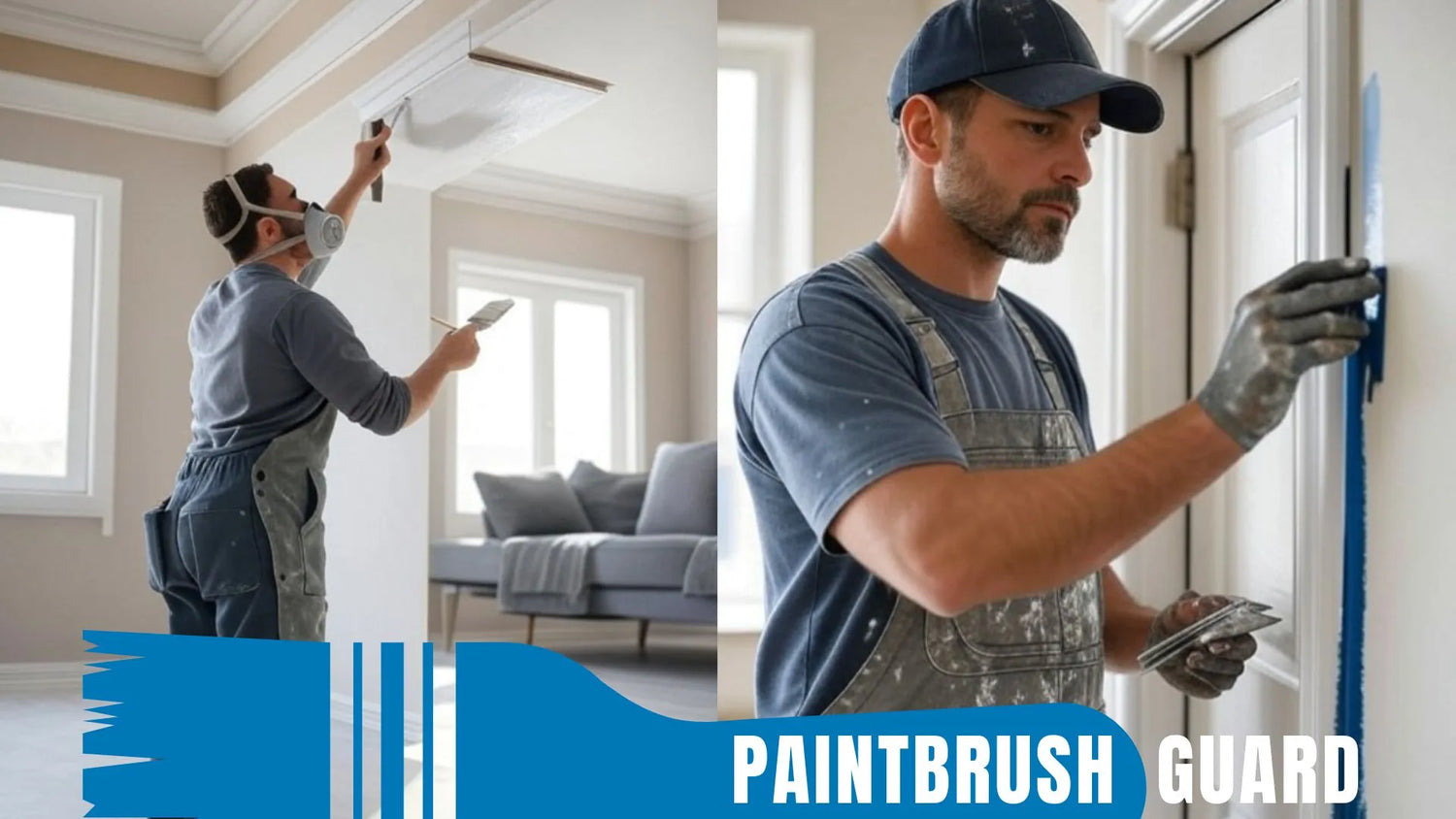
Can you paint metal in the rain? 5 tips for metal painting
|
Time to read 8 min
|
Time to read 8 min
You should not paint metal in the rain because moisture prevents proper paint adhesion, leading to peeling, bubbling, or an uneven finish.
Rain can also cause rust on unpainted metal surfaces, compromising the paint job’s durability. For successful exterior metal painting, dry conditions are essential to ensure the paint bonds well and lasts.
Read our exterior metal painting guide: This guide helps you achieving a professional long lasting paint result on exterior metal, preventing issues like rust, peeling or uneven finishes.
Painting metal surfaces requires careful consideration of environmental factors to achieve a lasting result.
When you attempt to paint metal in the rain, you face challenges that can ruin the finish and waste effort.
Exterior metal painting on surfaces like railings, siding, or outdoor furniture demands a dry, stable environment to ensure the paint adheres properly and resists weathering.
Moreover, metal’s smooth or non-porous nature, combined with moisture from rain, creates a poor surface for paint bonding.
Understanding these risks helps you plan exterior metal painting projects effectively, avoiding costly mistakes and ensuring a durable, attractive finish.
Rain significantly impacts the outcome of exterior metal painting, leading to several issues that compromise quality.
Moisture from rain interferes with the paint’s ability to cure and bond, affecting both aesthetics and functionality. Here’s how rain affects painting metal:
Attempting to paint metal in the rain leads to these problems, making it critical to wait for dry conditions to achieve a professional result.
Learn more about metal painting: This article explores the types of exterior metal paint, their applications and essential tips for a lasting finish.
Choosing the right weather is essential to avoid the pitfalls of painting metal in the rain. Ideal conditions ensure proper paint adhesion and curing for exterior metal painting projects. Here are key factors to consider:
By selecting these conditions, you optimize exterior metal painting, ensuring a smooth, durable finish that resists environmental damage.
Proper preparation is crucial for successful exterior metal painting, especially when avoiding painting metal in the rain.
Preparing metal in dry conditions ensures a clean, stable surface for paint adhesion. Follow these steps:
These preparation steps ensure that exterior metal painting in dry conditions yields a professional, long-lasting finish.
Avoid issues like peeling by sanding metal for exterior painting. Learn why skipping sanding fails and get tips for a pro finish on metal surfaces.
Applying paint correctly after proper preparation enhances the durability and appearance of metal surfaces.
These tips help you avoid issues like those caused by painting metal in the rain. Here’s how to achieve a flawless finish:
These tips ensure exterior metal painting results in a vibrant, durable finish, free from the issues of painting in wet conditions.
Learn when to prime exterior metal paint for a durable finish. Explore primer types, preparation, and application tips for metal surfaces.
Evaluating the advantages and challenges of painting metal under various conditions helps you make informed decisions. Painting metal in the rain or other conditions impacts the outcome of exterior metal painting projects.
Here’s a breakdown:
Dry conditions involve painting in mild, low-humidity weather with no rain, ideal for exterior metal painting.
High humidity, often associated with rain, involves moisture levels above 50% that affect paint performance.
Read our exterior house painting guide: This mega guide gives you clear tips, tools and methods on how to paint all exterior surfaces on your home.
Cold weather, below 50°F, affects paint flow and curing on metal surfaces.
Hot weather, above 85°F, speeds up paint drying, impacting application quality.
Windy conditions carry debris and affect paint application on metal surfaces.
These pros and cons guide you in choosing the best conditions for exterior metal painting, avoiding the pitfalls of painting metal in the rain.
With no cleanup required after a painting session, you can take a short break mid-project or wrap up your painting for the day, your brush stays ready without the need to clean.
Painting metal in the rain is not advisable due to risks like poor adhesion, bubbling, and rust formation, which compromise the finish’s quality and durability.
Instead, prioritize dry, mild conditions for exterior metal painting to ensure a strong, lasting result.
For instance, cleaning and sanding metal surfaces enhance paint adhesion, while choosing the right paint and applying thin coats prevent issues.
Meanwhile, monitoring weather conditions avoids the challenges of painting in wet or humid environments.
By following these tips and avoiding painting metal in the rain, you can achieve a professional, vibrant finish that protects and enhances metal surfaces for years.
Painting metal in the rain is risky because moisture prevents proper paint adhesion, leading to peeling, bubbling, or uneven finishes. Rain can also cause rust on unpainted metal, especially steel, and results in streaking or diluted patches, compromising the durability and appearance of exterior metal painting projects.
Ideal conditions for exterior metal painting include temperatures between 50–85°F, humidity below 50%, completely dry surfaces, no wind or rain for at least 24 hours, and indirect sunlight to prevent rapid drying. These conditions ensure proper paint adhesion, curing, and a smooth, durable finish.
Clean metal with degreaser or soapy water to remove dirt and grime, scrape off rust or peeling paint with a wire brush or sandpaper, lightly sand glossy surfaces with 220–400 grit sandpaper, apply a rust-inhibiting or self-etching primer, and protect surroundings with painter’s tape and drop cloths to ensure a stable surface for exterior metal painting.
Use high-quality brushes, foam rollers, or sprayers for even application, apply multiple thin coats to prevent drips, choose acrylic latex or direct-to-metal (DTM) paint for rust resistance, follow recommended drying times, and inspect for missed spots after each coat to ensure a vibrant, long-lasting exterior metal painting result.
Dry conditions ensure strong adhesion and even drying but require clear weather. High humidity risks bubbling and poor adhesion. Cold weather (below 50°F) slows drying and may cause cracking, while hot weather (above 85°F) can lead to brush marks. Windy conditions risk debris sticking to wet paint, affecting application quality for exterior metal painting.
Learn how long exterior paint lasts on metal, factors affecting durability, and expert tips for preparation and maintenance to extend its lifespan.

Learn about eco-friendly painting, tips and tutorials on house interior and exterior surfaces, so you can get started with your project without any surprices during or after your painting.

Learn how interior house paint colors influence mood with expert tips on room preference so you can pick the best colors for a harmonious home environment.
We focus on the most popular shades for each interior colors, so you don't miss no matter what color you pick.

Learn how this innovative tool allows you to store paintbrushes without the need for immediate cleaning, offering significant advantages in time savings, water conservation, reduced chemical pollution, and lower costs for supplies.


